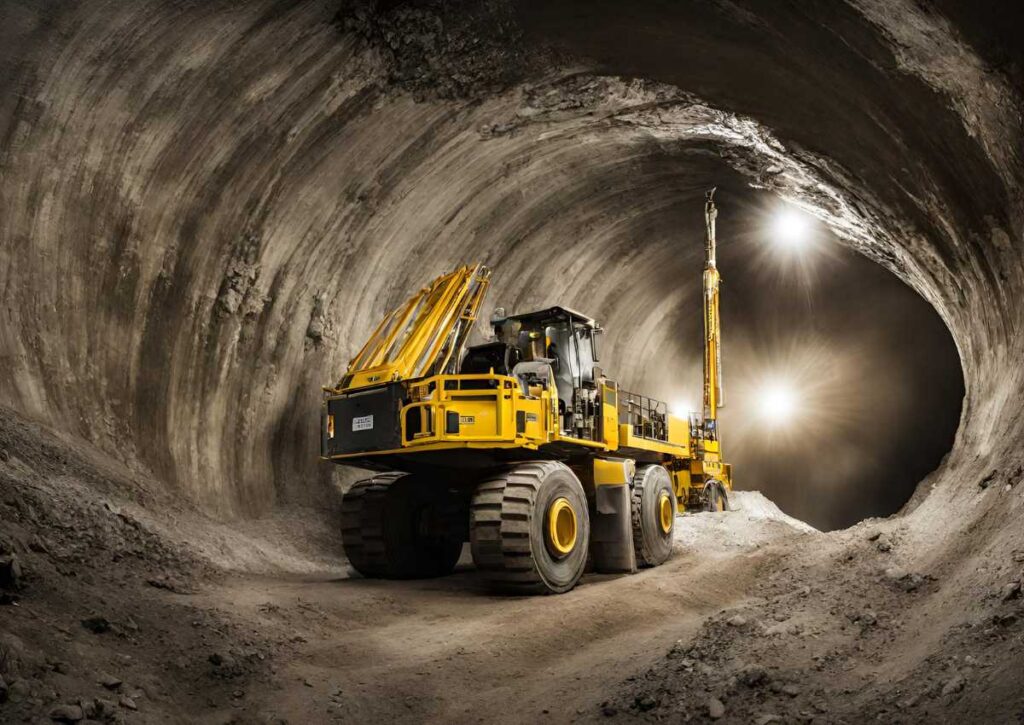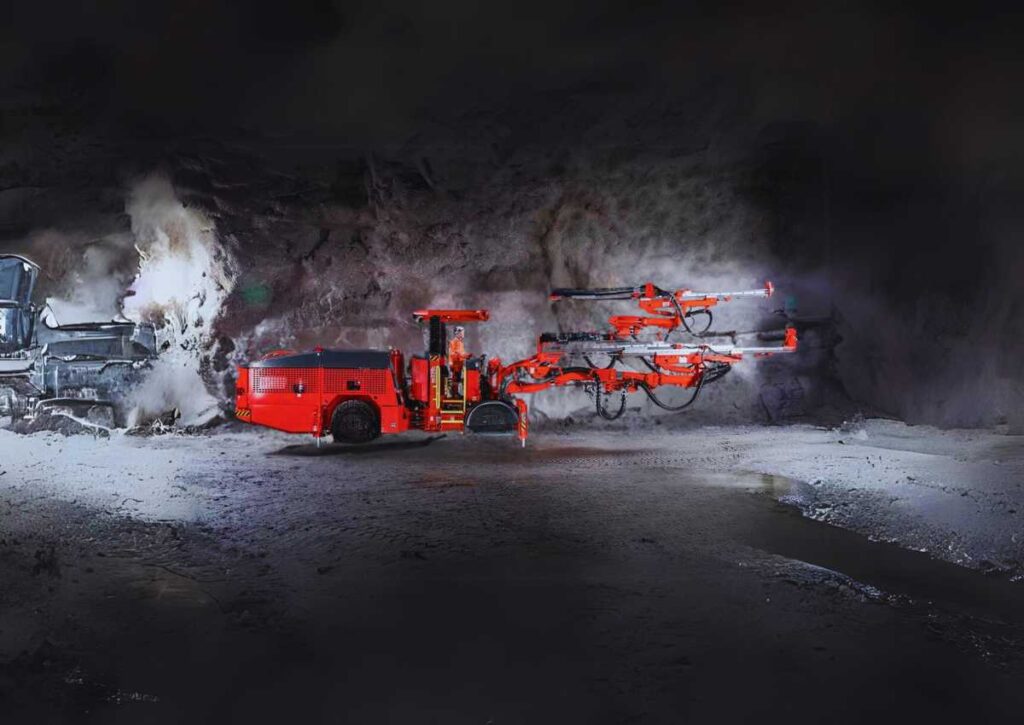In the challenging realm of underground mining and tunnelling, the role of drilling jumbos stands out as a powerful and essential tool. Originally invented in 1849 by J.J.
Couch of Philadelphia, drilling jumbos have evolved significantly over time to become a cornerstone in the extraction of minerals.
This blog explores the functionalities, advancements, and sustainability features of drilling jumbos, with a focus on their application in both mining and tunnelling scenarios.
The Anatomy of a Drilling Jumbo
A drilling jumbo typically comprises one to three rock drill carriages, often accompanied by a platform for the miner to carry out tasks such as loading holes with explosives.
These carriages are attached to a chassis that supports the miner’s cabin and the engine. Despite their considerable size, there are compact versions designed for cramped conditions.
Modern drilling jumbos can be equipped with rubber tires and diesel power, or in some cases, steel wheels for rail use.
Electricity and compressed air, known for their minimal exhaust emissions, are also utilized, especially in smaller tunnels where ventilation is challenging.
Applications in Mining and Tunnelling

Drilling jumbos play a pivotal role in underground mining, particularly when the extraction process involves drilling and blasting.
In tunnelling, they become indispensable when rock hardness hinders the use of tunneling machines.
These robust machines facilitate the labor-intensive process of mineral extraction, proving to be indispensable assets in various mining and construction projects.
Epiroc’s Underground Jumbo Drill Rigs

Epiroc, a leading name in the industry, offers advanced underground jumbo drill rigs equipped for blast hole drilling in mining and tunneling.
These rigs boast up to four booms, covering a range of cross-sectional areas.
With options like the Direct Control System (DCS) or the Rig Control System (RCS), featuring various levels of automation, Epiroc’s jumbo drill rigs are designed for efficiency and precision.
Automation Features for Enhanced Efficiency

Epiroc’s jumbo drill rigs come with a range of automation features, such as the Dynamic Tunneling Package (DTP), allowing for the creation of custom drill plans directly at the tunnel face.
This minimizes the need for back-and-forth communication between the office and the drill rig, leading to higher precision in tunnel development.
Additional automated functions, like drill rod and bit changes, coupled with safety features such as automatic leveling and drill stop protection, contribute to maintaining precision and safety.
Zero-Emission Battery Solutions
Embracing sustainability, Epiroc’s jumbo drill rigs are equipped with zero-emission battery solutions.
The Boomer E2 Battery underground jumbo drill rig exemplifies this commitment, offering not only environmental benefits but also increased operating hours and efficiency.
With over 75,000 operating hours, Epiroc’s battery-electric equipment leads the way in creating a more sustainable future for mining operations.
Conclusion
As technology continues to advance, drilling jumbos remain at the forefront of innovations in underground mining and tunnelling.
Epiroc’s commitment to sustainability and cutting-edge technology further cements the significance of these machines in shaping the future of mineral extraction.
Drilling jumbos are not just powerful tools; they are the driving force behind the evolution of efficient and environmentally conscious mining practices.
FAQs
What is the primary purpose of a drilling jumbo in underground mining and tunnelling?
A drilling jumbo serves as a powerful tool for mineral extraction, particularly in underground mining and tunnelling, where it is used for tasks such as drilling, blasting, and facilitating the labor-intensive process of extracting minerals from the earth.
How does a drilling jumbo contribute to environmental sustainability in mining operations?
Modern drilling jumbos, such as Epiroc’s Boomer E2 Battery, offer zero-emission battery solutions.
These battery-electric rigs reduce environmental impact by eliminating exhaust gases, providing a cleaner and more sustainable alternative for underground drilling.
What sets Epiroc’s underground jumbo drill rigs apart from others in the market?
Epiroc’s underground jumbo drill rigs stand out due to their advanced automation features, including the Dynamic Tunnelling Package (DTP) for custom drill plans and the Rig Control System (RCS) for teleremote operation.
These features enhance precision, safety, and efficiency in mining and tunnelling operations.
Can drilling jumbos be used in tunnels with limited space or challenging conditions?
Yes, drilling jumbos come in various sizes, including compact versions designed for cramped conditions.
Their adaptability makes them suitable for a wide range of environments, allowing for efficient drilling and excavation even in challenging and confined spaces.
How has the technology of drilling jumbos evolved since their invention in 1849?
Drilling jumbos have made significant advancements since J.J. Couch first created them in 1849.
Modern versions feature multiple rock drill carriages, automation capabilities, and diverse power sources, including diesel, electricity, and zero-emission battery solutions, showcasing continuous technological evolution.
What safety features are integrated into Epiroc’s jumbo drill rigs to protect operators and enhance precision?
Epiroc’s jumbo drill rigs incorporate safety features such as automatic levelling and drill stop protection.
These features, coupled with advanced automation, contribute to maintaining precision in drilling operations while ensuring the safety of operators working in hazardous underground environments.









